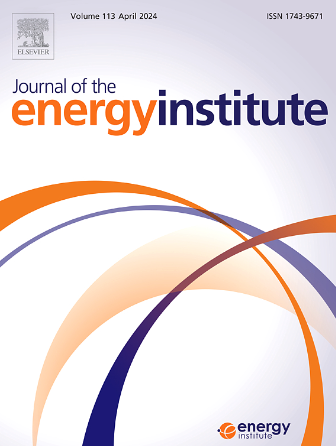Enhancing the tar removal efficiency and gas production for the pyrolysis of biomass through the nickel-based hollow zeolite
IF 5.6
2区 工程技术
Q2 ENERGY & FUELS
引用次数: 0
Abstract
Using metal-zeolite catalysts to improve the catalytic efficiency for tar cracking during biomass pyrolysis has attracted a lot of attention of scholars. Herein, the Ni@ZSM-5 catalyst with a hollow structure encapsulating Ni metal was synthesized by hydrothermal-recrystallization. The properties of the catalysts were evaluated by a series of characterization and compared with the solid ZSM-5 as well as nickel loaded ZSM-5. Through TEM observation, it was found that a regular cavity was constructed inside ZSM-5 with Ni particles encapsulated in it successfully. The unique hollow structure facilitated Ni@ZSM-5 owning greater Brønsted acidity and coke resistance, presenting a great activity and stability in tar catalytic cracking. The microporous shell prevented the sintering and loss of Ni significantly. Tar removal efficiency reached 92.2 %, and remained around 90 % after 10 cycles. Pyrolysis gas yield increased by 27.2 %, simultaneously. The reasons for excellent catalyst performance was analyzed as well as the potential evolutionary mechanism for tar molecule over Ni@ZSM-5. The utilization of this unique catalyst provides a reference in the field of biomass utilization.
求助全文
约1分钟内获得全文
求助全文
来源期刊

Journal of The Energy Institute
工程技术-能源与燃料
CiteScore
10.60
自引率
5.30%
发文量
166
审稿时长
16 days
期刊介绍:
The Journal of the Energy Institute provides peer reviewed coverage of original high quality research on energy, engineering and technology.The coverage is broad and the main areas of interest include:
Combustion engineering and associated technologies; process heating; power generation; engines and propulsion; emissions and environmental pollution control; clean coal technologies; carbon abatement technologies
Emissions and environmental pollution control; safety and hazards;
Clean coal technologies; carbon abatement technologies, including carbon capture and storage, CCS;
Petroleum engineering and fuel quality, including storage and transport
Alternative energy sources; biomass utilisation and biomass conversion technologies; energy from waste, incineration and recycling
Energy conversion, energy recovery and energy efficiency; space heating, fuel cells, heat pumps and cooling systems
Energy storage
The journal''s coverage reflects changes in energy technology that result from the transition to more efficient energy production and end use together with reduced carbon emission.
 求助内容:
求助内容: 应助结果提醒方式:
应助结果提醒方式:


